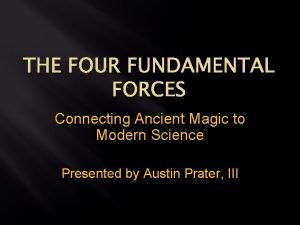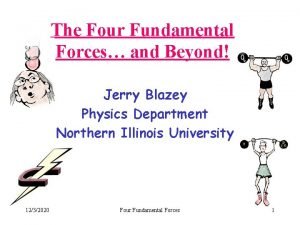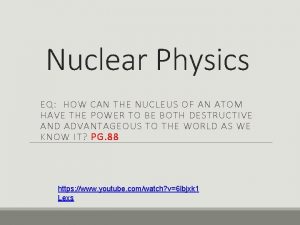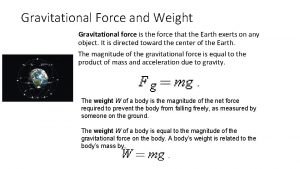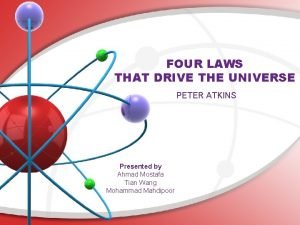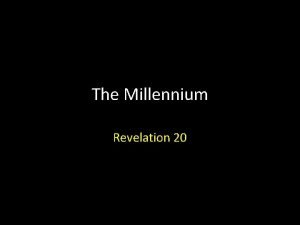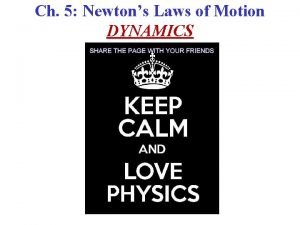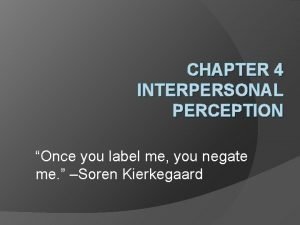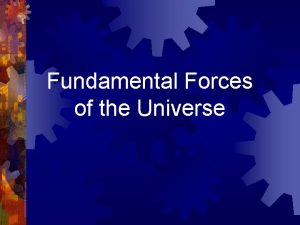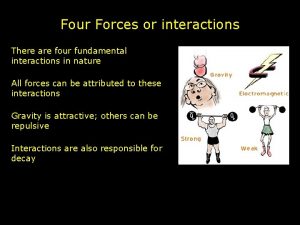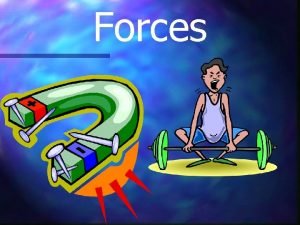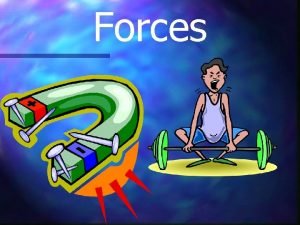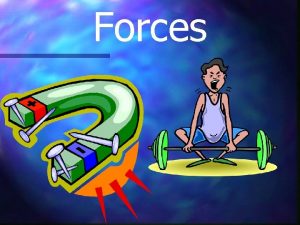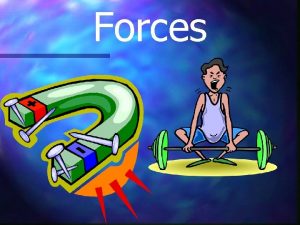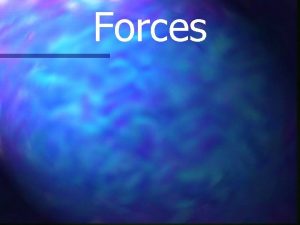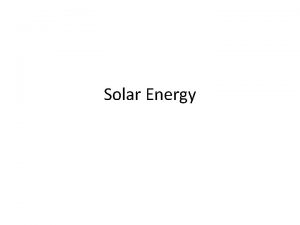Fundamental Forces of the Universe There are four













- Slides: 13

Fundamental Forces of the Universe

There are four fundamental forces, or interactions in nature. nuclear Strongest ® Electromagnetic ® Weak nuclear ® Gravitational Weakest ® Strong

Strong nuclear force ® Holds the nuclei of atoms together ® Very strong, but only over very, very short distances (within the nucleus of the atom)

Electromagnetic force ® Causes electric and magnetic effects ® Like charges repel each other ® Opposite charges attract each other ® Interactions between magnets ® Weaker than the strong nuclear force ® Acts over a much longer distance range than the strong nuclear force

Weak nuclear force ® Responsible for nuclear decay ® Weak and has a very short distance range

Gravitational force ® Weakest of all fundamental forces, but acts over very long distances ® Always attractive ® Acts between any two pieces of matter in the universe ® Very important in explaining the structure of the universe

Remember… ® The weak nuclear force is NOT the weakest of the fundamental forces. ® GRAVITY is the weakest force, but most important in understanding how objects in the universe interact.

Nuclear Reactions ® There are two kinds of nuclear reactions: ® Fusion ® Fission ® Protons and neutrons are the two most important subatomic particles in the nucleus and participate in these reactions.

Fusion ® Fusion is the process of combining nuclei of atoms to make different atoms. ® This reaction is going from SMALL to LARGE particles. ® Think of fusing two things together.

Fusion ® Nuclear fusion happens at the sun. ® One atom of hydrogen-3 and one atom of hydrogen combine to form a helium atom, a neutron and lots of energy!!! hydrogen-3 helium atom neutron hydrogen atom

Fusion ® Where does the energy come from? ® Energy is gained when the two hydrogen atoms break apart. ® Some of this energy is used up to create the helium atom, but the rest is given off as light. ® Mass is converted to energy! ®E = mc 2 (c = 3. 0 X 108 m/s) ® Since the speed of light is so large even a small mass will be converted to a very large energy.

Fission ® Fission is the process of breaking up the nucleus of an atom. ® This reaction is going from LARGE to SMALL particles. ® Think of breaking two things apart.

Fission ® Nuclear fission happens on earth. ® Nuclear fission begins when a neutron hits the nucleus of large atom. ® Adding this neutron makes the nucleus unstable and it splits into two smaller nuclei and two neutrons.
 Mikael ferm
Mikael ferm Four fundamental forces
Four fundamental forces Larry's four forces
Larry's four forces Beta minus decay
Beta minus decay Four fundamental forces
Four fundamental forces Four laws that drive the universe
Four laws that drive the universe There is no neutral ground in the universe
There is no neutral ground in the universe 4 fundamental forces of nature
4 fundamental forces of nature Fundamental forces in interpersonal perception
Fundamental forces in interpersonal perception What are like forces
What are like forces The forces shown above are pushing/pulling forces
The forces shown above are pushing/pulling forces Intramolecular vs intermolecular bonds
Intramolecular vs intermolecular bonds Difference between intermolecular and intramolecular
Difference between intermolecular and intramolecular Intramolecular forces vs intermolecular forces
Intramolecular forces vs intermolecular forces

